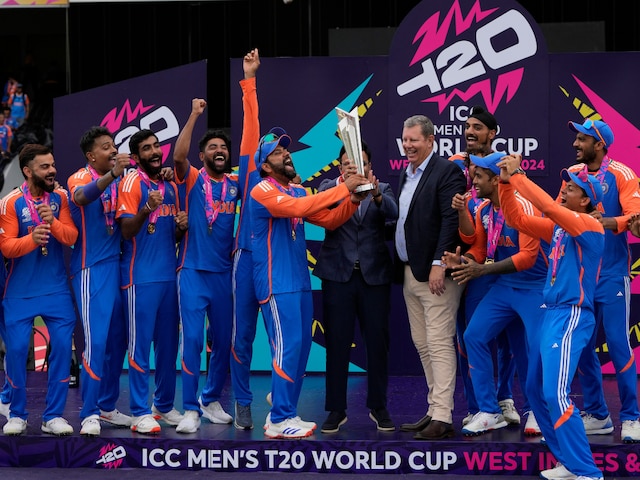Africatown and the story of Clotilda, the last slave ship

Manika studied Sociology. She is based out of Chandigarh.
We are all curious about knowing our roots, where we come from, who our ancestors were, and from where they came. We hear stories about them all the time; sometimes, they make us feel proud, sometimes ashamed. But whether shame or pride, these stories help us trace our history and give us a sense of belonging. But not all of us are privileged enough to know about our roots, for example, communities such as African Americans.
For decades millions of Africans were bought and sold into slavery. Many families were ripped apart; many names were changed; many identities were lost. Like commodities, their identities belonged to their owners. One such story of lost identities, of hardships, of suffering, of resistance, is the story of Africatown, a community-based in Mobile, Alabama, USA. Their story came into light after the discovery of the last slave ship Clotilda. This ship changed there and the lives of their descendants forever.
Africatown started with a bet
Long after the abolition of the international slave trade in 1859, one day, a wealthy man named Timothy Meaher got into a heated argument with some businessmen. He made a bold bet that he could bring 100 African captives right under the noses of federal authorities. It was a risky operation because, if he got caught, the punishment was death. No investor was ready to invest in this risky business, but he was determined. At last, he managed to get a ship named Clotilda for $ 35000 from his fellow shipwright and friend William Foster. He made William Foster captain of the ship. In late February or early March, 1860 began the infamous last slave voyage.
The brutal voyage
More than 100 African men, women, and children from Banté, Dahomey, Kebbi, and other regions of Benin and Nigeria boarded the ship. Living conditions on board the vessel were horrible. The air was filled with melancholy. There was a shortage of food and water, one ‘swallow’ twice a day only for survival. Hearts of mothers ached to look at the weary faces of their children. Slave ships were often called places of unspeakable misery. Sticking together and being there for each other was the only option in times of utter despair.
The sufferings during the journey often forged lifelong healthy slave communities unless they were separated again. One such community was born on Clotilda till the owners ripped them apart.
After over one and a half months, the voyage came to an end marking the beginning of bleak days ahead. Once reaching the Mobile Bay, Africans were transferred into a steamboat owned by Meaher’s brother, Burns. At the same time, Foster took the Clotilda to Twelve mile Island and set ablaze the evidence of one of the most heinous crimes.
Meanwhile, Timothy Meaher quickly organized a sale to settle his crime, and the families were torn apart. Around 80 of them were taken to Mobile others somewhere else. Meaher got arrested but soon was cleared from all charges.
Building Africatown
For five years, the slaves toiled incessantly in cotton, rice, and sugarcane fields and suffered abuses of their masters, all while living in horrible conditions. Then finally, on 12 April 1865, news of freedom came filling them with joy.
They took different jobs and started to rebuild the community. Gumba, a nobleman, was appointed as chief. Charlie Lewis and Jabe Shade, who was an herbalist and a doctor, were appointed as judges. They worked day and night to save enough money for returning to their homeland, but that was not possible. So, they opted for a new strategy, if they can’t go back to their country, they will bring their country back to them.
But that was not easy either. They asked for some land from Timothy Meaher as reparation, but he refused. Still, the Africans didn’t lose heart; they doubled the hard work and saved enough money to buy the land that too from Timothy Meaher and thus was born, the Africatown. They built Lewis Quarters named after Charlie Lewis on seven acres of land. Two miles away from that, they also made a church, school, houses, and planted gardens loaded with fruits and vegetables. Gradually the community grew more prominent, many of them were living two lives: one in the outside world where they were disgraced as clowns, monkeys and savages, and second in Africatown with their beloved family and culture. By the 1960s, more than 12,000 people were living in Africatown.
Proud descendants
The descendants of Africatown are eternally grateful to their ancestors for building such a tight-knit and self-sufficient community. Last month around 200 people were gathered like a family reunion to honor their ancestors and celebrate their heritage. “This little community was self-sustaining. We had everything we needed right here. The school taught us to be viable women and viable men. These folks had it going on,” says Darron Patterson, a descendent of founder Pollee Allen.
Lora Woods, another descendent remembering the good old days, says, “we could reach out the window and hand two slices of bread to the home next door.” “I’m 70 years old,” Woods says, “and I still have in my heart a dream that our town will one day have stores and shops and gas stations again.”
The celebration went on the whole day. Representatives of different founding families shared tales of courage, love, and determination. Feeling proud of the story that started with a bet.
Still fighting
Development spares no one. Once home to almost 12000 people, Africatown now only has a population of around 2000 people. Industrial pollution and problems of public healthcare have turned a once viable community to a group of people struggling for existence, again.
Big Paper Mills that were once responsible for the growth of the community during the mid 20th century is now the reason for the destruction of the community. Womack, a retired army major and leader of a local environmental justice group, has sued the industrial plant. Residents of Africatown believe that International Paper was responsible for releasing hazardous chemicals into the river, causing many health problems, including cancer. Further, it had also failed to clean the site thoroughly when it was closed 20 years ago. But the firm denies all the allegations.
Cancer is also a grave issue faced by the residents of Africatown. There is an alarming increase in the death rate due to cancer. Many longtime residents die before the age of 65, often from cancer. In a survey of about 150 families, 100 families said that they have members with cancer. People of Africatown blame the wrongdoings of industries for this situation, but the industry denies it.
Still, people are not ready to give up. The recent discovery of the remains of Clotilda has filled them with new hope. They see tourism as a way for the economic development of people to revive the community. “The city hasn’t taken care of the community because they want to industrialize the whole area,” Womack says. “They want to make money, but they could make money with tourism. We have to head them the right way.”
Founders of Africatown survived slavery. Can their descendants survive the brunt of development?
Featured Image Credits: Wikimedia









Readers' Reviews (2 replies)